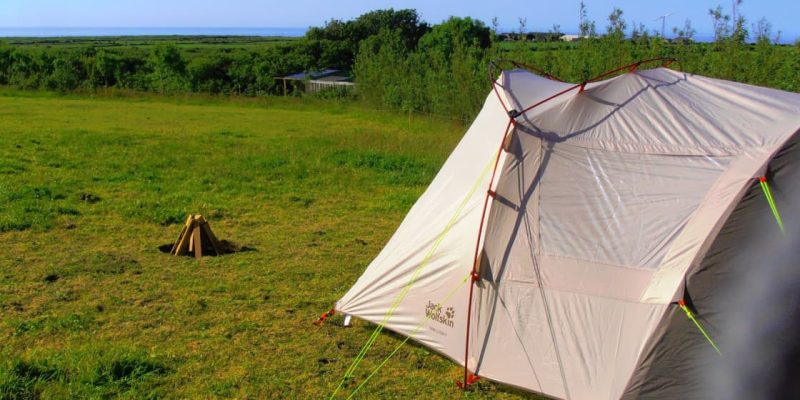Wild Camping Cornwall: Top 10 Scenic Spots to Pitch Your Tent

Wild camping Cornwall offers an unparalleled experience of freedom and connection with nature. With its rugged coastline, picturesque beaches, and tranquil countryside, Cornwall provides the perfect backdrop for an adventurous camping trip. In this guide, we’ll explore the top 10 scenic spots to pitch your tent in Cornwall, along with essential tips and information to ensure a memorable wild camping experience.
Wild Camping Cornwall:Porthcurno Beach
Porthcurno Beach, known for its stunning turquoise waters and fine white sand, is a must-visit for wild campers seeking a seaside escape. Nestled between dramatic cliffs, this beach offers a secluded and serene environment. Camping near Porthcurno Beach allows you to wake up to the sound of waves and enjoy breathtaking sunrises. The area offers plenty of opportunities for coastal walks, exploring caves, and even visiting the famous Minack Theatre. To make the most of your stay, arrive early to secure a good spot, be mindful of tides and weather conditions, and follow Leave No Trace principles to preserve the natural beauty.
Wild Camping Cornwall:Bodmin Moor
Bodmin Moor, a designated Area of Outstanding Natural Beauty (AONB), is perfect for those who love hiking and exploring rugged landscapes. This granite moorland is dotted with ancient monuments and wildlife, offering a unique camping experience. Pitching your tent on Bodmin Moor gives you a sense of remoteness and tranquility. The expansive views, starry skies, and peaceful atmosphere make it an ideal spot for nature enthusiasts. Be prepared for varying weather conditions, bring plenty of water and supplies, and respect local wildlife and historical sites to ensure a safe and enjoyable camping experience.
Zennor Head
Zennor Head, located on the north coast of Cornwall, offers stunning panoramic views of the Atlantic Ocean. This rugged headland is known for its dramatic cliffs and wildflower-covered meadows. Camping at Zennor Head provides an incredible vantage point for watching the sunset over the ocean. The area is also popular for birdwatching and coastal hikes. To fully enjoy your stay, ensure your tent is securely pitched to withstand coastal winds, stay on designated paths to protect fragile vegetation, and carry a map and compass as the terrain can be challenging.
Gwithian Towans
Gwithian Towans is a beautiful stretch of sand dunes and grassy areas located near St. Ives Bay. This spot is popular among surfers and beach lovers, offering a blend of coastal and dune landscapes. Camping at Gwithian Towans allows you to experience the best of both worlds – the beach and the dunes. Enjoy long walks along the shore, surfing, and relaxing in the peaceful surroundings. To make the most of your visit, check for local camping regulations and restrictions, be aware of potential high winds and sand movement, and practice responsible campfire management.
Rame Head
Rame Head is a remote and unspoiled headland on the southeastern coast of Cornwall. With its sweeping views of the coastline and the English Channel, it’s a perfect spot for a quiet and scenic camping experience. Setting up camp at Rame Head offers a sense of solitude and a connection with nature. The area is rich in history, with a medieval chapel and ancient earthworks to explore. For a rewarding experience, plan your visit during good weather conditions, respect historical sites and local wildlife, and carry sufficient water and provisions as there are no nearby facilities.
Kynance Cove
Kynance Cove, located on the Lizard Peninsula, is famous for its turquoise waters, white sand, and unique rock formations. This picturesque cove is one of Cornwall’s most photographed locations. Camping near Kynance Cove allows you to enjoy the stunning scenery and explore hidden coves and caves. The clear waters are perfect for swimming and snorkeling. To enhance your stay, arrive early to avoid the crowds, especially during peak season, be cautious of tides and wave conditions, and adhere to local regulations regarding wild camping.
Pentire Head
Pentire Head, situated between Polzeath and Port Quin, offers spectacular views of the Atlantic Ocean and the rugged Cornish coastline. This headland is part of the South West Coast Path, making it a popular spot for hikers. Camping at Pentire Head provides a dramatic setting with breathtaking views and opportunities for wildlife spotting. The coastal paths offer excellent hiking routes. To enjoy your camping trip, secure your tent well due to potential coastal winds, follow marked trails to protect the environment, and carry enough food and water for your stay.
Porth Joke Beach
Porth Joke Beach, also known as Polly Joke, is a hidden gem near Newquay. This secluded beach is framed by grassy cliffs and is less crowded than nearby beaches, offering a peaceful camping spot. Camping at Porth Joke Beach allows you to enjoy a quiet and relaxing environment with beautiful coastal views. The area is ideal for beachcombing and swimming. To ensure a pleasant experience, respect the local environment and wildlife, avoid camping during high tide to prevent flooding, and check local guidelines for wild camping.
St. Agnes Beacon
St. Agnes Beacon, a prominent hill near the village of St. Agnes, offers panoramic views of the surrounding countryside and coastline. This historic site is steeped in mining history and natural beauty. Camping at St. Agnes Beacon provides a unique vantage point for stargazing and enjoying the stunning landscape. The area is great for hiking and exploring historical mining sites. To fully appreciate your visit, bring warm clothing as the beacon can be windy and cold, follow local camping regulations, and respect the historical significance of the site.
Trebarwith Strand
Trebarwith Strand, located on the north coast of Cornwall, is a beautiful beach surrounded by cliffs and caves. This spot is known for its stunning sunsets and excellent surfing conditions. Camping near Trebarwith Strand allows you to experience the beauty of the beach and the excitement of surfing. The dramatic cliffs and rock pools add to the charm of this location. To make the most of your stay, be aware of tide times and coastal conditions, respect local wildlife and marine life, and practice Leave No Trace principles to keep the area pristine.
Conclusion
Wild camping in Cornwall offers an unparalleled opportunity to connect with nature and explore some of the most stunning landscapes in the UK. From dramatic cliffs and secluded beaches to tranquil moorlands and scenic headlands, Cornwall has a diverse range of camping spots to suit every adventurer. By following responsible camping practices and respecting the local environment, you can ensure that these beautiful locations remain unspoiled for future generations to enjoy.
FAQs
1: Is wild camping legal in Cornwall?
Wild camping is generally not legal in England, including Cornwall, without the landowner’s permission. However, discreet, responsible wild camping is often tolerated in remote areas.
2: What should I pack for wild camping Cornwall?
Essentials include a sturdy tent, sleeping bag, camping stove, food, water, warm clothing, a first aid kit, and a map and compass.
3: How can I find a suitable wild camping spot in Cornwall?
Look for remote areas away from busy tourist spots, and ensure you have the landowner’s permission if required. Use maps and local knowledge to find secluded spots.
4: What are the Leave No Trace principles?
Leave No Trace principles include planning ahead, camping on durable surfaces, disposing of waste properly, leaving what you find, minimizing campfire impact, respecting wildlife, and being considerate of other visitors.
5: Are campfires allowed while wild camping Cornwall?
Campfires can be dangerous and are often discouraged due to the risk of wildfires. Use a portable camping stove for cooking and avoid open flames.
Also read: CARAVAN MAKES TO AVOID: 10 BRANDS TO STAY CLEAR OF











